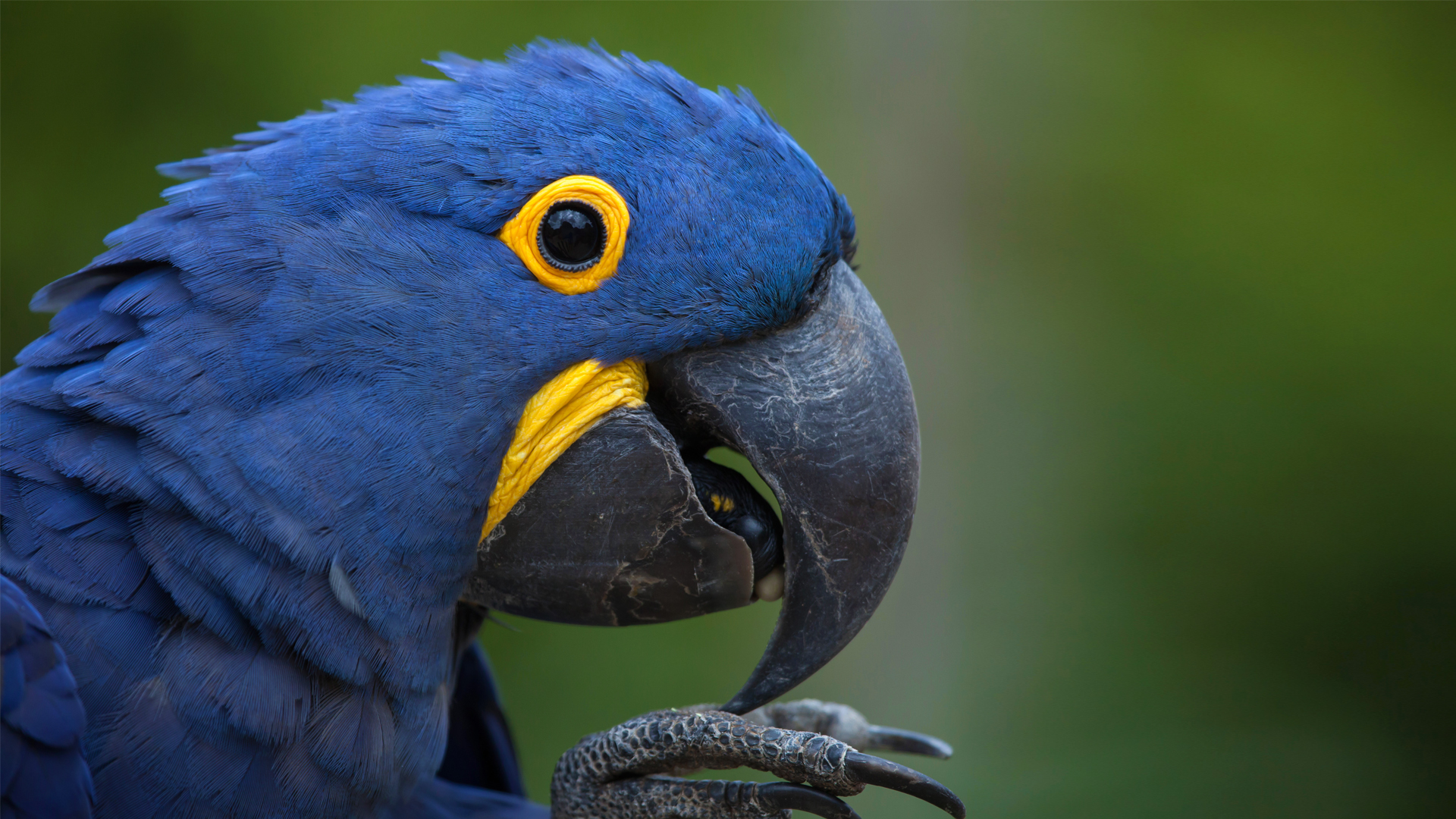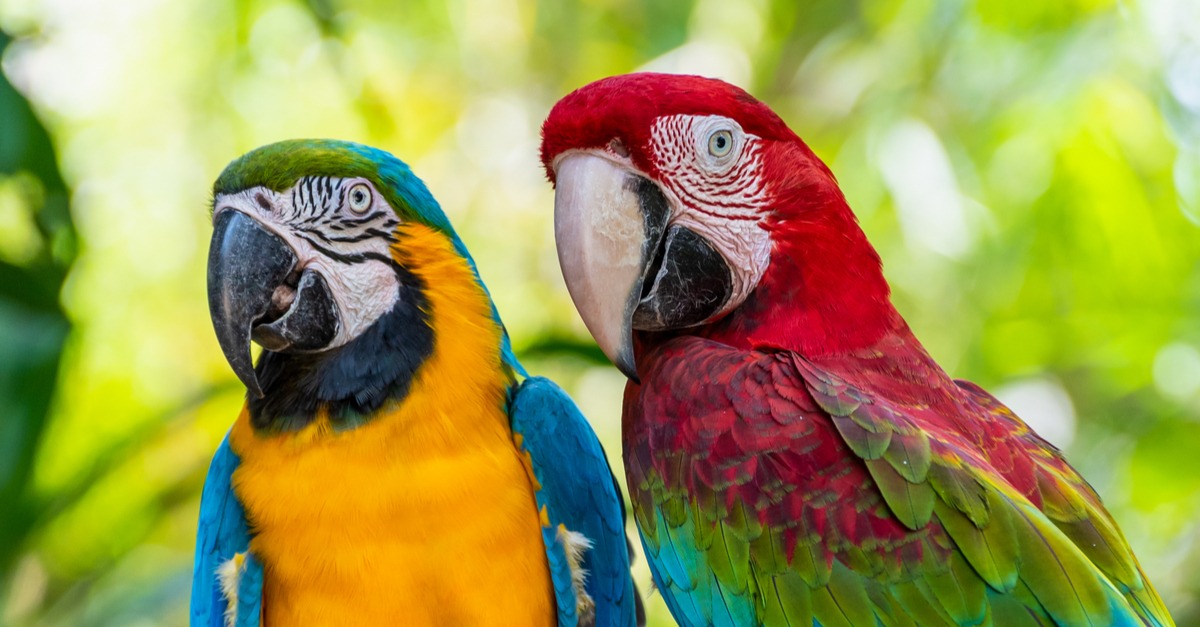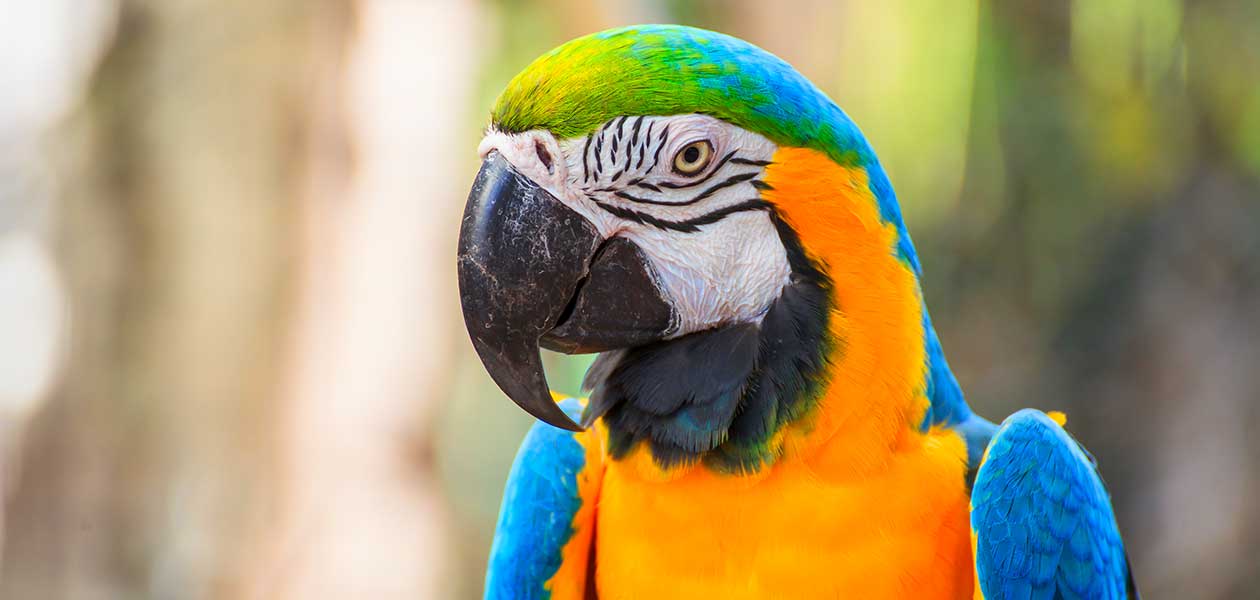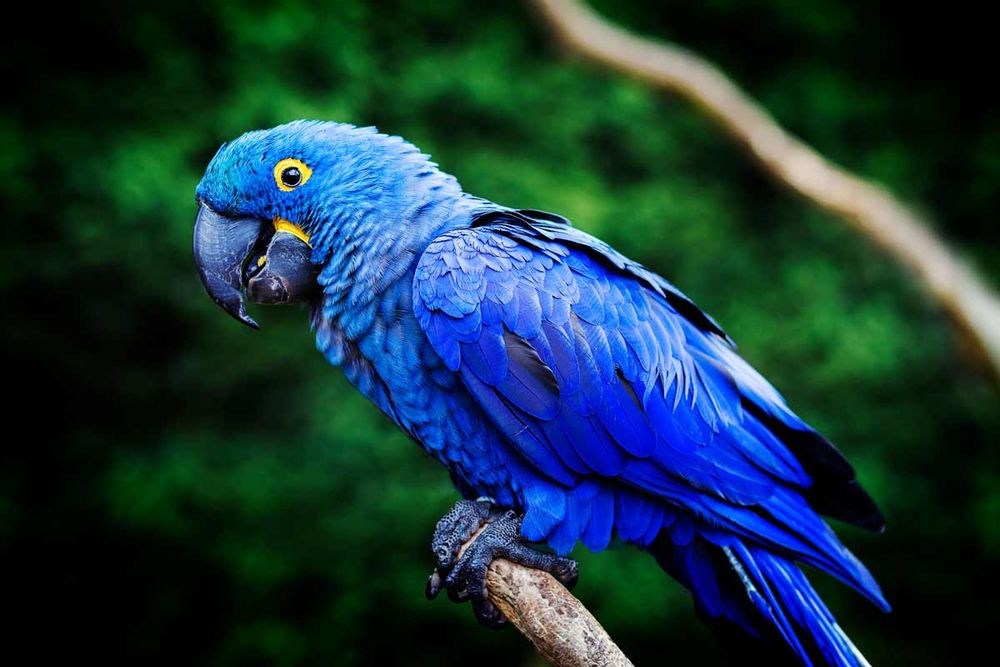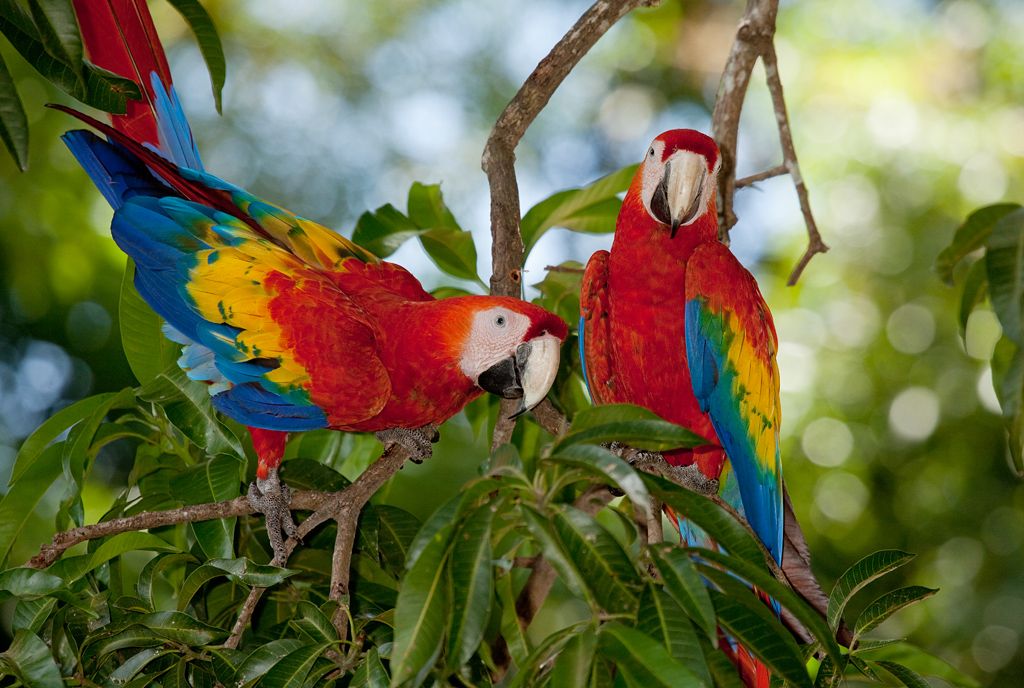STATUS
Critically Endangered

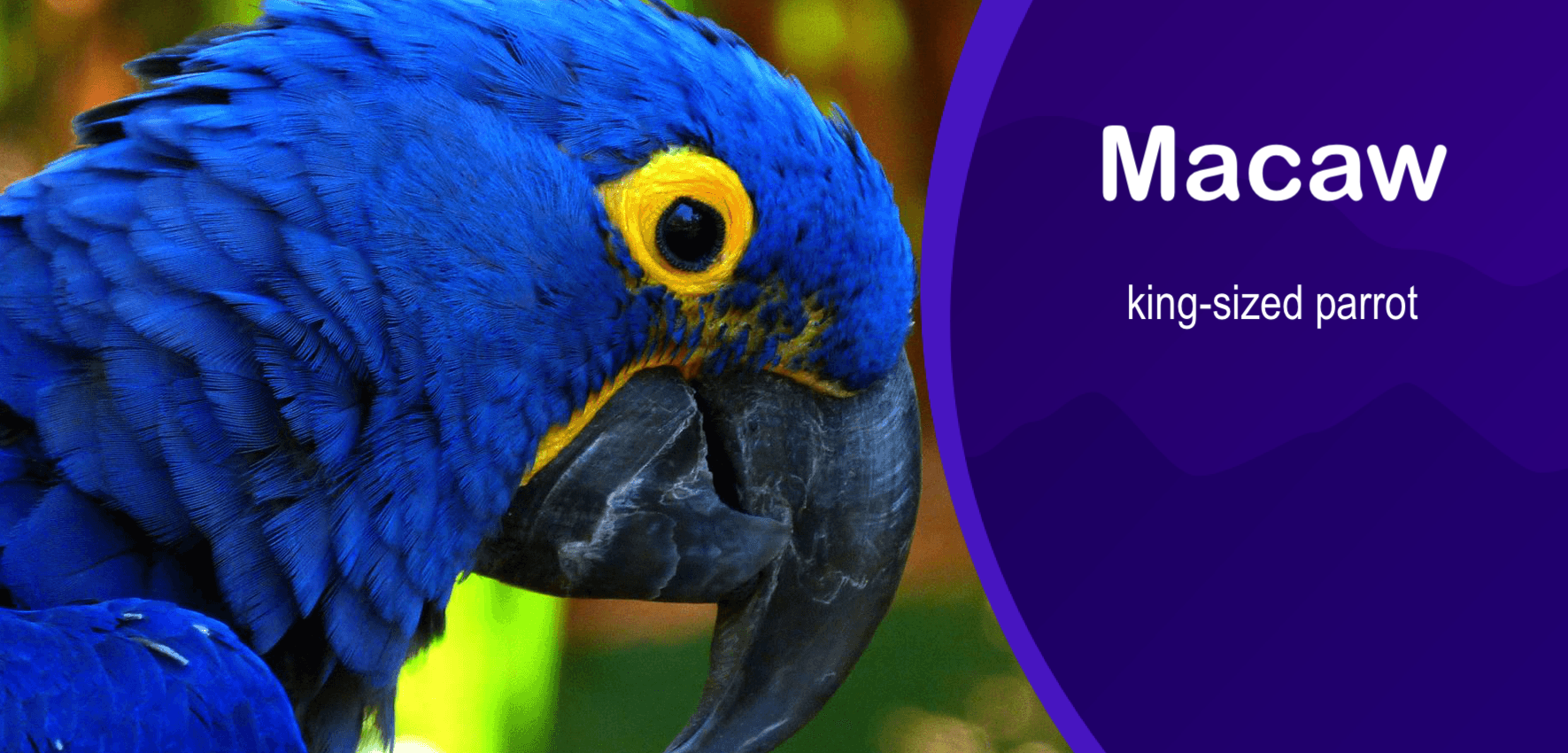
Macaws are king-sized members of the parrot family and have typical parrot features. Their large, strong, curved beaks are adapted for crushing nuts and seeds. Their strong, agile toes are used like hands to grasp things. Loud, screeching and squawking voices help make their presence known in dense rainforests. They are also famous for their bright colors, which seem bold and conspicuous to us but actually blend in well with the green leaves, red and yellow fruits, and bluish shadows of the forest homes.
Macaws are adapted for flying through the trees in the forest, with a streamlined body and tail shape and wings that don’t flap deeply. When they come in for a landing, they drop their tail and feet downward and use their wings like brakes to slow down before grasping a perch with their feet. Most macaws nest in holes of trees or in earthen banks and cliff sides.
Macaws are intelligent and curious birds that like to explore and keep busy. They are very aware of their surroundings, which is necessary to keep watch for predators. As social birds, they spend a lot of time interacting with their mates and their family groups. Macaws have been known to use items as tools, and they like to play with interesting objects they find.
They examine the objects from different angles, moving them with their feet, testing them with their tongue, and tossing them around. Macaws are also big chewers, something they need to do to keep their beaks in good shape. They can do impressive damage to even very hard wood with their beaks. Most macaws like to take baths, and they play in the water as they splash around.
Screaming is a natural call for macaws. They do it to make contact with one another, to define territory, and even as part of their play. Their calls can be quite earsplitting to humans! Macaws can also imitate sounds, and macaws that live with or near humans often repeat words they hear, practicing to themselves until they get it right.

STATUS
Critically Endangered

SCIENTIFIC NAME
Ara macao

POPULATION
only 50,000 in wild

LENGTH
30 to 110 cm

WEIGHT
129 gms - 1.4kg

HABITAT
RAINFORESTS
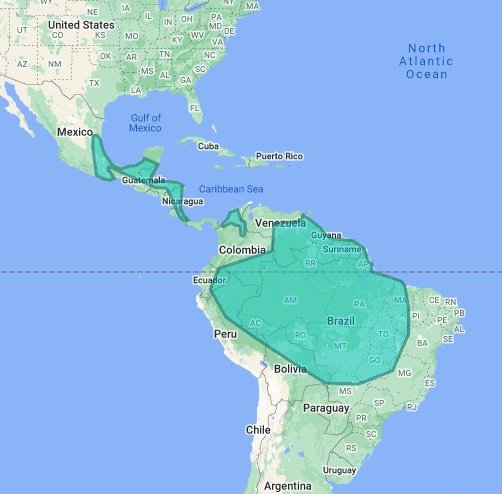
They play an important role in their habitats by dispering the seeds and nuts they feed on. This allows seeds to be germinated, and for vegetation to grow throughout their range, providing a base for the rest of the food chain.
The habitat of scarlet macaws is threatened due to forest destruction in the deep rainforest habitats where they live. Also, poachers seek out the parrots and will even cut down the tree where the nest is located to access the young or will shoot the adults for food
The illegal, international parrot trade brings in large revenues each year due to the high demand for these colorful birds. An individual scarlet macaw may be sold for more than $1,000. Also, birds may be hunted for meat and the feathers traded for money. Current law dictates that it is illegal to trade
macaws are also killed for their feathers, used by rural communities to make headdresses and art. Although this used to be reserved for religious purposes and did not threaten the macaw population, an increase in tourism to these areas means tourists are now taking home souvenirs made with the macaw's feathers.
macaws are sought as pets because of their lively colors and friendly personalities. The pet trade exports macaws primarily to the United States, although many households in the macaw's native range have them as pets as well. Many of the captured birds (as much as 99%) die from health complications before ever being sold.
